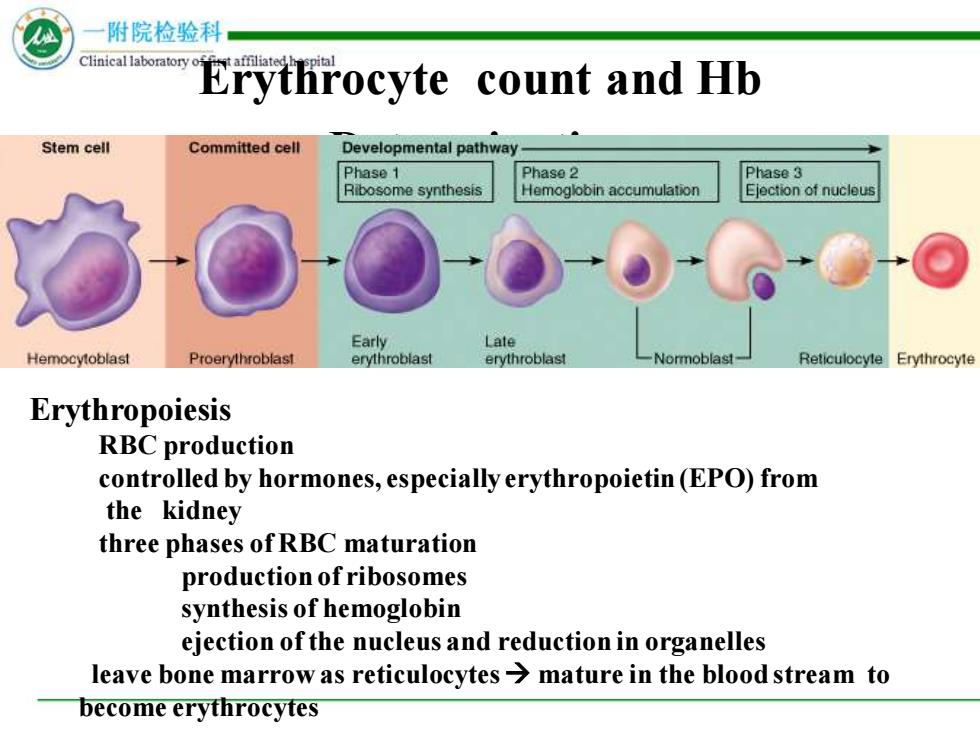
一附院检验科 Clinical laboratoryoffrs affiiated hospital sample collection venous blood and capillary blood ·EDTA-K2tube ·Test must be done in6h
sample collection • venous blood and capillary blood • EDTA-K2 tube • Test must be done in 6h

附院检验科 Clinicallaboratory offrst affiliated hospital Test method Automatic blood cell analyzer ·manual method If sample was difficult to diagnosis both must be used
Test method • Automatic blood cell analyzer • manual method • If sample was difficult to diagnosis both must be used

附院检验科 Clinical laboratory E岁throcyte count and Hb Stem cell Committed cell Developmental pathway Phase 1 Phase 2 Phase 3 Ribosome synthesis Hemoglobin accumulation Ejection of nucleus Early Late Hemocytoblast Proerythroblast erythroblast erythroblast Normoblas Reticulocyte Erythrocyte Erythropoiesis RBC production controlled by hormones,especially erythropoietin(EPO)from the kidney three phases of RBC maturation production of ribosomes synthesis of hemoglobin ejection of the nucleus and reduction in organelles leave bone marrow as reticulocytes>mature in the blood stream to become erythrocytes
Erythrocyte count and Hb Determination Erythropoiesis RBC production controlled by hormones, especially erythropoietin (EPO) from the kidney three phases of RBC maturation production of ribosomes synthesis of hemoglobin ejection of the nucleus and reduction in organelles leave bone marrow as reticulocytes → mature in the blood stream to become erythrocytes

一附院检验科 Clinical laboratoryofraffiiated hospital Composition of Blood:Erythrocytes Red blood cells are responsible for: Transport of oxygen and nutrients Removal of waste and CO2 from the cells Distribution of heat Hemoglobin:the O2 carrying potential
Composition of Blood: Erythrocytes • Red blood cells are responsible for: – Transport of oxygen and nutrients – Removal of waste and CO2 from the cells – Distribution of heat • Hemoglobin: the O2 carrying potential

附院检验科 Clinical laboratoryoffir affiliated hospital Physiologic function Erythrocytic average life is 120 days. Aging erythrocyte are destroyed in spleen and degraded into iron,globin and bilirubin. These substances can be recycled by body
Physiologic function • Erythrocytic average life is 120 days. • Aging erythrocyte are destroyed in spleen and degraded into iron, globin and bilirubin. • These substances can be recycled by body